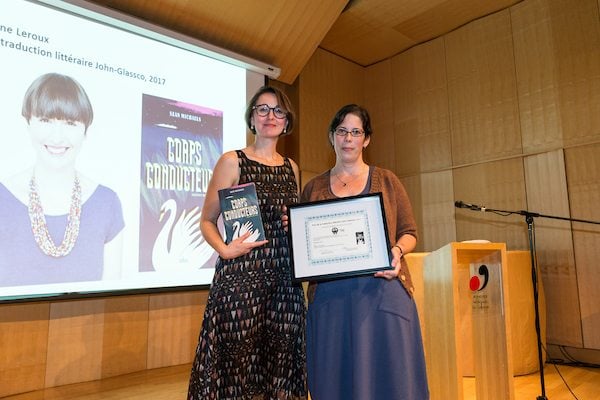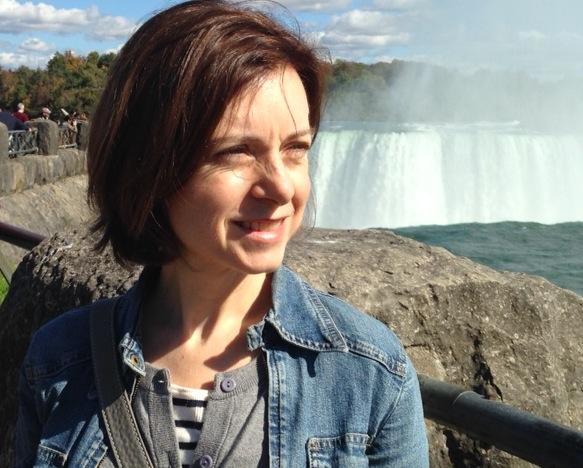
Antoine Tanquay (via Twitter)
To be honest, I’m a really optimistic kind of guy,” says Antoine Tanguay, president of Éditions Alto, a small literary press based in Quebec City.
Optimism is arguably a required trait for the former journalist and broadcaster who decided to launch a French-Canadian publishing house in 2005, on the cusp of the digital revolution. Alto began as a vehicle for publishing Tanguay’s old university friend, Nicolas Dickner, who had a first novel called Nikolski that was in search of a home. “We worked on Nikolski for a few months, and the rest is history. We sold 90,000 copies of that book in French. So, it was all an accident.”
Nikolski paved the way for Tanguay and his colleagues at Alto – Chloé Legault, who handles production, and Tania Massault who does publicity and marketing – to make their mark in a very short time. It also positioned Tanguay and Alto in the vanguard of a new crop of publishing houses that have appeared in the past few years; these houses, popping up alongside larger stalwarts such as Les Éditions du Boréal and Groupe Québec Amérique, are helping to breathe new life into Quebec’s literary scene.
The francophone side of Quebec publishing is “in the middle of a renaissance right now,” says author, translator, and editor Dimitri Nasrallah. “I would argue that they have one of the strongest publishing sectors in the country.”
Richard Prieur, director of l’Association nationale des éditeurs de livres, Quebec’s publishing association, agrees. “You don’t have that many publishing houses closing their doors or ceasing their operations,” he says. “But you have new publishing houses appearing.” The proliferation of new publishers, particularly in the literary field, has been so robust in recent years, says Prieur, that Alto’s Tanguay “is almost an old-timer now.”
The type of book that gets published is changing as a result. Younger publishers are taking risks on new writers who have different influences and approaches. “We had this tradition of, maybe, navel-gazing fiction, we had more intimate fiction,” says Tanguay. “I wasn’t into that. I wouldn’t be good at publishing that. I was really more Anglo-Saxon oriented. The writers I was reading were Paul Auster, John Irving, Thomas Wharton.” While the roots and mythology of Quebec remain intact, Tanguay suggests, there is a new openness to international perspectives and modes of storytelling.
“I think that it’s due to a new generation of publishers in Quebec,” says Simon Philippe Turcot, publisher of les Éditions la Peuplade. Turcot mentions Le Cheval d’août, founded in 2014 by Geneviève Thibault; Les Éditions de ta mère, which launched in 2005; and Le Quartanier, whose publisher, Eric de LaRochellière, is responsible for publishing Samuel Archibald, Daniel Grenier, Éric Plamondon, and Geneviève Pettersen, and who is often regarded as spearheading the new generation of francophone Quebec publishers. “This new generation knows how to find readers. We easily use social media – but in the good way, for networking,” says Turcot. “We create events, we mobilize young readers who will follow us for years and years. And we use technology without being afraid.” These publishers manage to survive by keeping their operations small and lean. Staffs are often limited to two or three people, and overhead is kept deliberately low.
Which is not to say that everything is easy. The domestic market in the province is small, and sales are down due to the rise of alternative modes of entertainment such as cable television and Netflix. Quebec has a population of just over eight million people, seven million of whom are francophone. Prieur estimates the number of readers to be around half that. A bestseller in Quebec is around 3,000 copies. “Reaching 3,000 copies in the last three or four years is tough,” says Tanguay. “It’s really tough. And the average sale is about 500 to maybe about 1,000 copies if you’re a good press and the author is known. Those are real numbers.”
To counteract this, publishers in the province are increasingly looking to expand their markets, both nationally and internationally. Québec Édition, a committee of ANEL, has been instrumental in securing platforms for publishers at international book fairs in Frankfurt, Bologna, and elsewhere, as well as gaining honoured status for Quebec at the Geneva Book Fair this past April, and representing the province’s publishers at the French Librarians’ Congress in Paris in June. “Over the last 10 years, the efforts that were put into Québec Édition were just truly amazing,” says Tanguay. “This really helped to get some Quebec books out there.”
Ironically, the one place that French-language books out of Quebec don’t seem to gain much traction is in the rest of Canada. Though not for want of trying. The Canada Council’s translation rights fairs, which have been held annually since 2011, were folded into Montreal’s Salon du livre festival in 2016; these fairs provide a crucial opportunity for French and English publishers to meet and build relationships. “It was a good laboratory for us,” Turcot says. Recently, Turcot has sold translation rights for Christian Guay-Poliquin’s Le fil des kilomètres and Dominique Scali’s À la recherche de New Babylon to Talonbooks, and Chantal Neveu’s coït to BookThug. “For us, it’s not a problem to find a good publisher,” says Turcot. “The problem is they don’t sell enough.”
To be fair, the difficulty can also work in the opposite direction. Tanguay bought the rights to translate Sean Michaels’s debut novel, Us Conductors, into French before the book won the 2014 Scotiabank Giller Prize; the win didn’t seem to affect the ultimate sales of the French edition, which Tanguay says sold around 2,000 copies. Tanguay has the same concern about Madeleine Thien’s Do Not Say We Have Nothing, which he is bringing out next year in a translation by Catherine Leroux. “[Thien] has won the GG, she won the Giller, she was a Man Booker finalist, and yet, when the time comes to put her out there,” Tanguay says, “there will be work to be done.”
Perhaps this is where the optimism kicks in. And to hear Nasrallah tell it, the readership for French-language texts is at least as open and diverse as the new crop of writers. Nasrallah, who runs the Esplanade fiction imprint at Montreal’s Véhicule Press, noticed a marked uptick in interest when his own novel, Niko, was translated into French. “There’s a narrower readership in the English market, for sure,” Nasrallah says. “I find that there’s a better gender balance on the French side, there’s a better age balance, and there’s a better class balance. It’s not simply people holed up in universities or collected in book clubs who happen to be doing the readings.”
What Nasrallah refers to as a “cultivated readership” in francophone Quebec acts in symbiosis with the new brand of publisher willing to take risks on more outré material. Samuel Archibald’s story collection Arvida was shortlisted for the Giller in 2015 (in a translation by Donald Winkler), but that book didn’t move huge numbers in English Canada. Nasrallah estimates it sold in the neighbourhood of 30,000 copies in the original French, a remarkable feat for such a heterodox and challenging book. “Arvida is a wild collection of short stories,” Nasrallah says. “It’s going off in a million different directions.” Very much like the vibrant publishing culture that produced it.



 Contact us via email
Contact us via email

